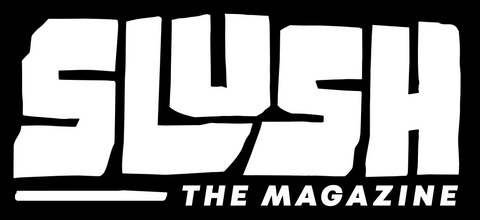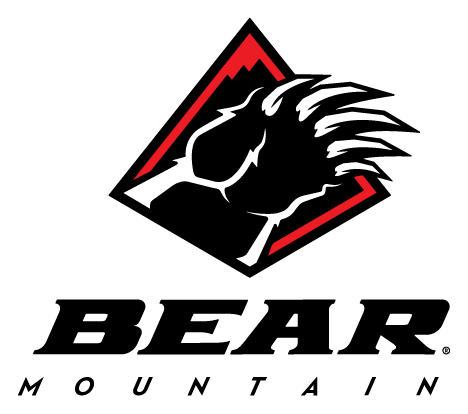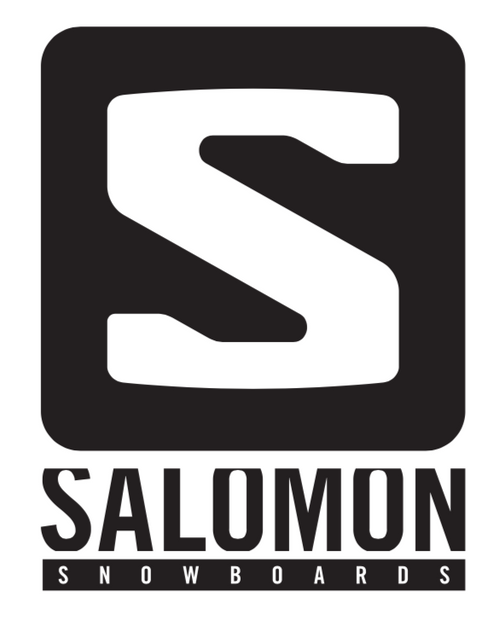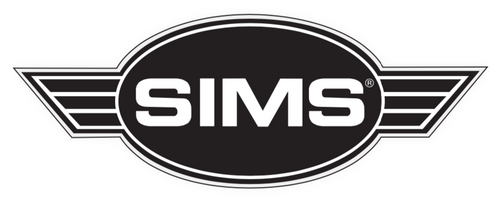
The first week of March, ten of the finest backcountry snowboarders, all hailing from Canada, gathered in the Kootenays for the second stop of the 2021 Natural Selection Tour. For a week, Mark Sollors, Marie-France Roy, Leanne Pelosi, Mikey Rencz, Beau Bishop, Robin Van Gyn, Craig McMorris, Spencer O’Brien, Chris Rasman, and Dustin Craven broke ground at Baldface Lodge’s newest tenure, Valhalla, sussing out lines and sending in some of the most unique topography in North America. The second NST stop of the year, the Bronco Natural Selection at Baldface Valhalla, took a different approach than the Jackson Hole event, combining a single line and short video part to decide the male and female winners who would continue on to Tordrillo Mountain Lodge in Alaska for the final event of the season. Once the sun had set on the contest, it was Chris Rasman, alpine authority and celebrated Manboy, that was the men’s champion of Natural Selection at Baldface Valhalla. Make sure to watch his winning run and video part (check Red Bull TV and @naturalselection) and get a glimpse of what this BC maverick will be bringing to Tordrillo Mountain Lodge in Alaska. We caught up with Rasman the day before he headed to AK to get some insight on Baldface Valhalla, Jackson, and his mindset heading to the final stop of the 2021 Natural Selection Tour. – Mary T. Walsh
Before this year, when was the last time you rode in a contest?
Haha, honestly, I’d have to really think about it. My first instinct for a response to that would be a Showcase Showdown like eleven or twelve years ago. Oh no, you know what it was? It was in like 2013 at a Monster Boarder Style which is the fun, goofy, freestyle boardercross event that Monster throws in Whistler, but I don’t know if that really counts.
Before getting into what went down in Valhalla, what was the Jackson NST event like for you?
I didn’t really know what to expect going into it. I’m pretty green with the whole contest vibe. I don’t have a history of being on podiums or dealing with contest pressure. All of the snowboarding at a high level that I do is done in the privacy of the backcountry with a small crew. Going into it, I was kind of nervous about what the contest vibes were going to feel like and how intense it was going to be. Then getting there, it was just so not like that. There were parts of it that were intimidating and nerve wracking, especially the night before when we found out it was running the next day, but hanging with everyone was so cool. That whole crew, from the riders to the media, everyone involved was just such good vibes and so happy to be there. I initially thought like, I guess this is just what it’s like. We’re in a rad industry with like-minded people, everyone is just cool. But then talking to people like Jamie Anderson and Anna Gasser, they were like, “No contests aren’t all like this. It’s a very different vibe. It’s intense, there are coaches everywhere, the riders aren’t talking to each other about their runs and their plans. It’s really competitive and different.” Obviously, I’m biased because backcountry snowboarding is my life, but I will say that I think powder snowboarding and backcountry snowboarding carries a different energy to it and the people that are attracted to it are maybe a different type of competitive. It was just fucking rad. It was one of the coolest things I’ve been a part of, being at that Jackson event.
Do you think that shared experience of how teamwork is so vital in the backcountry contributed to that collaborative vibe in Jackson?
To be a backcountry snowboarder and film video parts, it’s not just about how good you are as a snowboarder. That’s actually probably a little lower on the list. It’s how good your crew is, how well you work together, how well you can be safe out there and make the right decisions bouncing ideas off each other. Riders that know your type of riding well can tell you “No, that’s probably not going to work for you. What about this trick instead?” All that stuff is so important in backcountry filming for your success and your terrain selection that I think that, by default, has applied to this contest, but also was really necessary. I was sitting in EJack’s room the night before qualifiers and we both had our laptops out, watching the drone footage and bouncing ideas off each other for what runs we were going to do. Yeah, we’re friends, but this isn’t a film contest. Eventually if Eric and I both made it to finals at the Jackson event, we’d be competing against each other and that could be considered counterintuitive to be talking about our plan, but that wasn’t the case. It was necessary. I was going up the chairlift with Travis before our third run and I was bouncing ideas off him. We’re competing against each other, and I’m like telling him my plan. I just don’t really see that happening in other competitive sports or slopestyle contests. I think it’s just a necessary part of backcountry snowboarding. The teamwork and the idea bouncing and the safety concerns. That’s all part of the success and what goes into making it happen.
Going into Baldface Valhalla, totally different situation than the Jackson event in terms of the format and also in terms of the terrain. Heading into stop two, what was your mindset?
Going into Baldface, I was hungry and excited. The competitive side in me that I didn’t really know existed came out. I was doing a lot of meditating and stretching and home workouts. I was doing my Canadian quarantine after Jackson and really wanted to win this Canadian event.
Could you talk a little bit about the specific terrain of the Valhalla tenure?Even though it’s only like a nine-hour drive from Whistler and it’s still in British Columbia, the terrain is very different in Baldface Valhalla. Here in Whistler, we have some of the best snowmobile-accessed snowboard terrain in the world, but alpine is alpine. There’s a distinct treeline and when you get above it, there are no trees. There are just cliffs, lines, rolling features, and landings. It’s pretty wide open and you can connect a lot of the glaciers together. The Kootenays have really steep and spiney alpine, and I wouldn’t even really call it alpine even though the elevation is higher than Whistler, because there’s fucking trees everywhere. Everywhere you look, it’s just littered with trees. I don’t know much about it but it’s something to do with the climate out there, the trees just manage to grow a little bit higher on the slopes than they do in Whistler. It really makes things difficult. How I operate out there is I tend to look for transitions first. You can’t catch air if you can’t have a landing, so there’s no point in looking for a launch first and then realizing there’s no landing. It was hard because there were a lot of landings that had hazards all over the place, so there was a lot of jumping and line-riding where you had to factor in that you might hit a tree if you fuck it up. It was very precise. Whistler is a bit more wide open and leaves a bit more room for error when you’re hitting a big jump or step-down, whereas the Kootenays are very tight.
That is really wild.
Totally. I haven’t seen the broadcast yet. I don’t know if they used any GoPro clips of my second run, but I did the cab five into that line and then the miller flip. On my second run I just wanted to try and get the same top two tricks and then switch up the bottom part of my run, so I cab fived again a little bit deeper and a little bit further left. If you slow down the GoPro clip, my shoulders wrap around a tree on takeoff and I literally dodge it while I’m spinning. It’s crazy because I wanted to drift but then the tree was right there. My body basically spins around the tree as I’m initiating my spin.
That is crazy. No one had ridden that zone in the group before, correct?
None of the athletes had ever ridden that terrain before. We were all just like, Okayyyy, let’s see what we can do with this. It was definitely a quiet, jaw-dropping moment.
That’s an unusual position to be in, right?
Yeah, totally. Especially cruising around with people like Leanne Pelosi or Mikey Rencz, they’re such vets that there aren’t many places in BC that they haven’t ridden.
Let’s talk about your winning run. It really encapsulated the freestyle backcounty riding that Natural Selection is highlighting and celebrating, of course, but also just looked very much true to your natural riding style—which really reinforces the event, itself, too.
I think coming off of Jackson and seeing how that event went and how it was judged probably gave me a bit of an edge going into this event, but my run at Baldface Valhalla is also, like you said, a pretty good representation of how I ride and how I film. I am a backcountry snowboarder, but I am a backcountry snowboarder with a lot of freestyle influence. I will never be the type of snowboarder that’s going to be on the top of some crazy run in Chamonix with an ice axe and a harness trying to shimmy down some sketchy shit. I love the idea of riding big lines and I love the idea of my riding developing more into bigger Alaska-style terrain where you have to memorize your turns and spine riding and all that shit, but at the end of the day, I’m a freestyle backcountry rider. I took that approach.

How is the strategy different dropping in at Valhalla compared to when you’re filming?
The big difference there is just when we film for our parts, we seek perfection. We get to hand select what we’re putting in and what we’re using and we get to try it over and over again how we want it to look. When I’m filming for a part, how I do the tricks and the style is really important to me, but this is just one shot at a contest run here so I didn’t have the luxury of being as picky about how my features went down. The threes at the bottom were a little bit loose and I wish I could’ve done them better, but at the same time, when I got to the bottom of that run after I landed the backflip, I was like, Holy shit, all of the five tricks that I planned on doing on this random run that I’ve never rode before, they all worked. Wow, that’s a good feeling. Part of backcountry riding is falling. Hitting big stuff and landing in powder is really hard and falling is part of the game. When people watch our video parts, that is a polished collection of our best stuff that we’ve worked all year with so many fails in between to get to that. Natural Selection is cool because it’s showing the public the vulnerability and mistakes that some of the best snowboarders in the world make to try and get to that level. Even for people that want to be professional backcountry snowboarders, they don’t get too hard on themselves when they miss a trick or miss a grab when filming. We all do that, this shit is hard. You’re never going to be perfect at it, it’s an endless battle.
Totally, and that’s probably part of the drive. If everything was easy, what would be the fun?
Straight up. A big part of my drive is just wanting to outdo myself every year, it’s just this internal battle that I have with myself and I think a lot of pro snowboarders can relate to that.
Can you tell us a little bit about the filming portion of Valhalla?
Obviously, what we do is so dependent on conditions. We got as lucky as we could’ve gotten for how it went down there. Our week got shortened. The plan was to film all week and produce a full minute-long video part with as many hammers as we could have, but we really only had the contest run day and then about a three- or four-hour window the day after to film. They’re a little shorter than I would’ve liked, and I’m sure the other riders would’ve liked, but a bunch of cool boarding went down. We had this different face which was a couple ridges over from the one that we did our contest runs on and we took off in our crews. Beau and I took our filmer and told him to bring his small camera, no tripod, and just shot a bunch of wide angle stuff. Hit this, boom, front three off this, boom. It was fun and pretty hectic. Now I’m going to really appreciate being able to sit on my sled and eat beef jerky after a session instead of running around and forgetting to drink water.
Have you ridden the Tordrillos before?
I have been to the Tordrillo Mountain Lodge once before. Travis and I did a short film a couple years back called Truffle Pigs. Our plan was to initiate a project similar to what him and Elias did with Dark Matter. It was supposed to be like a freestyle line riding segment short film in the Tords, but this crazy windstorm came in right after we got there and fucked all the snow up. We couldn’t ride any lines because they were all super shiny, windblown ice. We just built cheese wedges at the bottoms of glaciers where the snow was a big more Styrofoam-y and not as windswept. While I have been there and been at the lodge, I haven’t ridden any of the big mountain terrain in the Tordrillos, so this will be new for me for sure.
Going from Jackson to Valhalla and now to Alaska, what do you hope overall that viewers take away from seeing what you guys are doing?
I hope they see through the broadcast the passion that we all have for this. I hope they see how important it is to care about the impact that we have on the world and the environment. I know that can be biased coming from people who use helicopters and snowmobiles to get around, but I don’t think it’s about eliminating everything you do. I think it’s about just understanding that there’s a bigger picture and just existing as a human on this Earth has some level of guilt, but if more people fall in love with the mountains, more people are going to do their part to care about what this environment and climate are going to look like for our kids. I also hope they see how hard we all work to do this, how much we love it, and how it’s not really about money for most of us because there isn’t much money in this industry. It really is about passion. I hope it makes more people want to snowboard. I hope more people buy snowboards. I hope there’s more ways for people to get into snowboarding cheaper. I hope more people of color and more people from different parts of the world can get into snowboarding. I hope it just opens up the industry more for everyone.
I recently read an interview with you in King Snow from 2014. In it you said you would feel like you’ve made it once you Googled your name and the first image that came up wasn’t the one of you with two black eyes from your very first video part premier in Montreal. You’ve filmed lauded video parts, you now are a contest champion and I checked Google. The photo is not at the top anymore. Do you feel like you’ve made it?
That’s a loaded question. I feel all professional snowboarders, or maybe professional athletes in general, share the same blessing and curse that they’re never fully happy with what they’ve done. Yeah, I guess I do feel like I’ve made it. I’ve had video parts. I’ve had some magazine covers and interviews. I’m now competing at one of the most prestigious events snowboarding has ever had. But that’s not going to take away from me constantly setting new goals for myself. I feel gratitude. I do feel like I’ve made it, but I’m going to keep on making it, if you know what I mean.



















